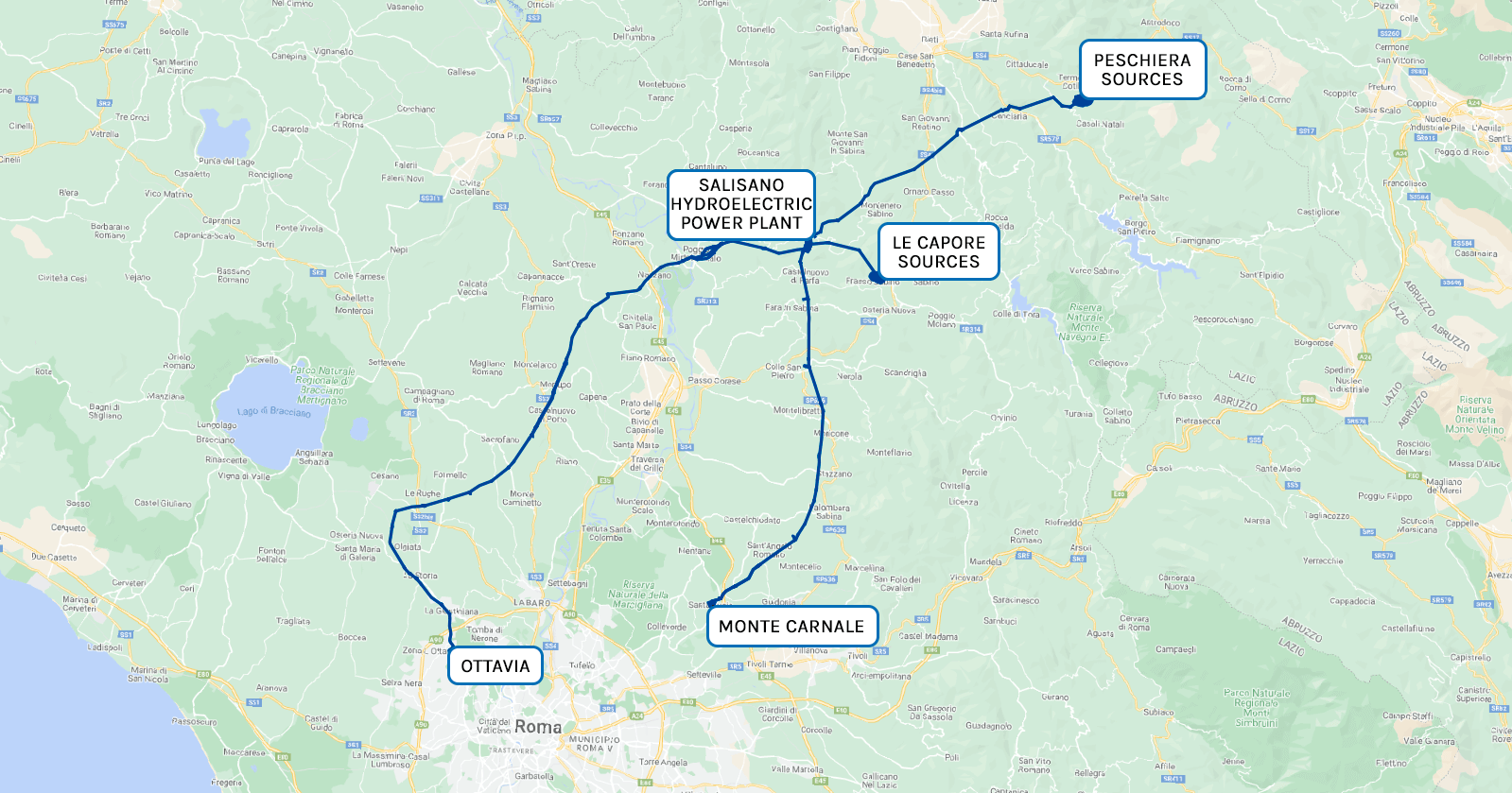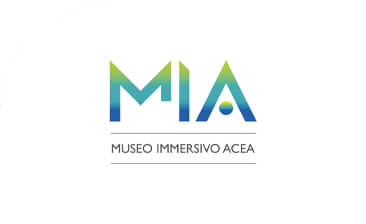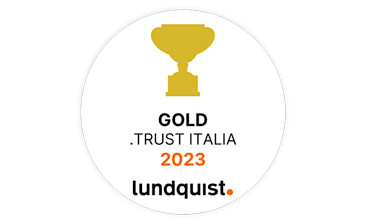
Acea for World Energy Saving Day
''Regina aquarum'', i.e., ''queen of waters'', was one of the ways in which the ancient city of Rome was called, showing that since its foundation, its history has been closely bound to water.
Beginning in 312 B.C. and over a period of 5 centuries, 11 aqueducts were built in the city of Rome, ensuring an enormous water supply.
The technical skills of the Romans in aqueduct construction were inherited not only from Phoenicians and Greeks, but especially from the Etruscans.
The sources of water supply were selected taking into account continuity of flow, purity and freshness. They mainly consist of underground springs and, only exceptionally, surface water.
The Romans had a deep knowledge of the basics of hydraulics. Not only did they dig tunnels and raised arches for future aqueducts in Rome, but also built reservoirs, distribution tanks, low-pressure pipes and equipment.
Of the 11 aqueducts supplying the city in Ancient Rome, some still survive restored to this day. The Aqua Virgo is the only one of the ancient Roman aqueducts still in operation.
The Roman Aqua Virgo aqueduct is the only among the aqueducts in Ancient Rome to be still in operation today, despite more than twenty centuries have passed from its construction (it was inaugurated on 9 June 19 BC). Its crystal-clear waters still feed parks, gardens, flowerbeds and artistic fountains in the centre of Rome.
This Roman aqueduct owes its longevity to its almost total underground development, with depths that can exceed 40 metres, as for instance in the Parioli district. Inside the speco, (i.e., the flow channel), water flows slowly, advancing at free surface, thus not under pressure, pushed only by the force of gravity due to the slight slope of its bottom.
The Peschiera-Capore aqueduct is one of the most important engineering works of the modern era.
The need for the construction of the aqueduct arose in the early 1900s, when the city of Rome was experienced a large population growth which made necessary the construction of an infrastructure capable of supplying the entire city.
The work for the new aqueduct ended in 1949, and continued into the 60s with further extensions; the Peschiera-Capore as we know it today was completed in 1980.

Today, 80% of spring water supplying the city of Rome comes from the Peschiera-Capore aqueduct; this is supplemented by the new Marcio aqueduct.
The Marcio aqueduct is to be counted among the strategic infrastructure for water supply in the city of Rome and its province, currently being upgraded with the aim of increasing safety and sustainability while maximizing environmental protection.
As regards the Peschiera Aqueduct, in 2022 the Sustainability Report was completed, in accordance with the reference regulations of the PNRR (National Recovery and Resilience Plan), and the authorisation process was started. For the Marcio Aqueduct, the document concerning the implementation of the Minimum Environmental Criteria (CAM) has been completed.
The CAMs - adopted by Decree of the Ministry for Environment, Land and Sea Protection of Italy – are the minimum environmental requirements aimed at rationalize consumptions and purchasing by providing indications for the identification of better design solutions, products or services from an environmental point of view.
Water distribution in Rome is carried out through an extensive network of aqueducts and pipelines: due to its complexity and strategic nature, the Roman water network is continually undergoing maintenance and efficiency improvements.
Discover the latest news and initiatives of the Acea Group

Acea for World Energy Saving Day

Visit the virtual museum about the history of the Acea Group

The channel for the commercial requests on land urbanisation

Acea turns the spotlight on the Rome Film Festival 2023

Acea is in the "Gold class" in the .trust research

Read more about our culture of inclusiveness